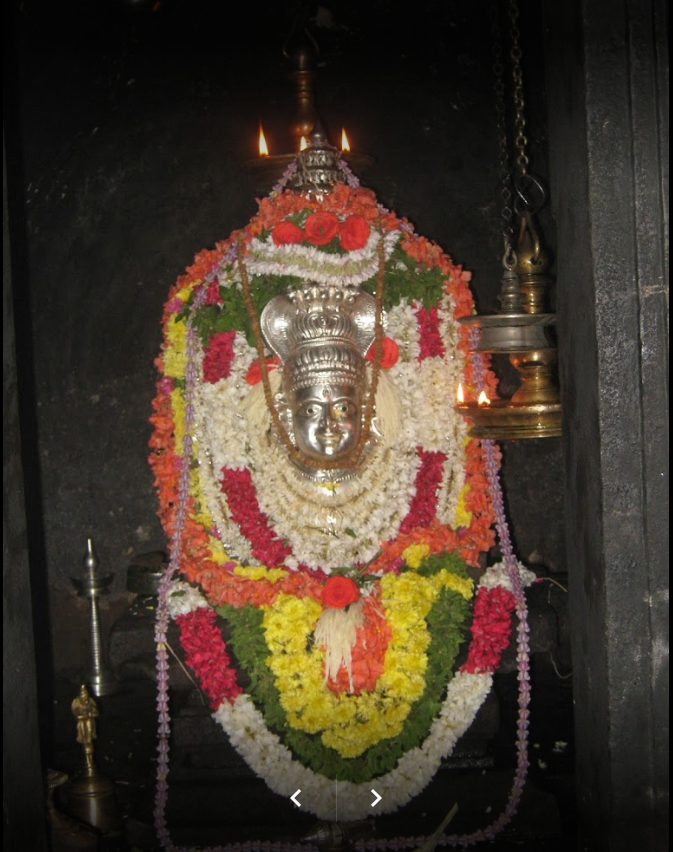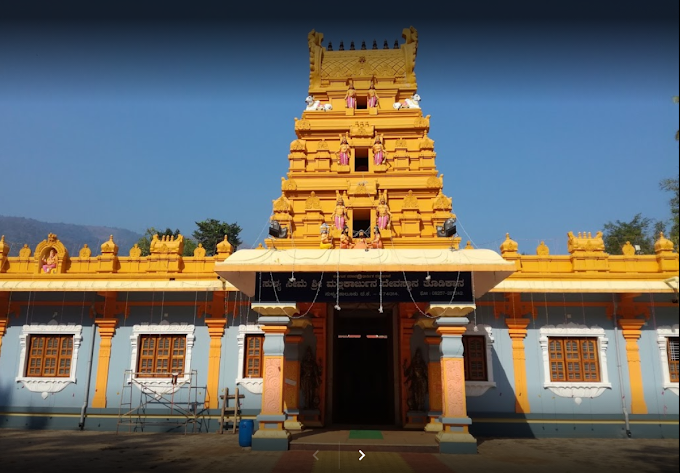Meenakshi Temple Madurai, Tamil Nadu
Meenakshi Amman Temple, also known as Minakshi-Sundareshwara Temple, is one of the oldest and most important temples in India. Located in the city of Madurai, the temple has a great mythological and historical significance. It is believed that Lord Shiva assumed the form of Sundareswarar (the handsome one) and married Parvati (Meenakshi) at the site where the temple is currently located. Renowned for its astonishing architecture, Meenakshi Temple was nominated as one of the wonders of the world, but couldn’t make it into the list of ‘Seven Wonders of the World’. However, the temple is definitely one of the ‘Wonders of India’. It is also one of the main attractions of South India with thousands of devotees thronging it every day. During the ‘Tirukalyanam Festival,’ which takes place over a period of 10 days, the temple attracts more than a million devotees. Despite many people visiting it every day, the temple is well-maintained and was named the ‘Best Swachh Iconic Place’ (cleanest iconic place) in India.
Mythology According to a legend, Meenakshi emerged out of a ‘Yajna’ (sacred fire) as a three-year-old girl. The ‘Yajna’ was performed by a king named Malayadwaja Pandya along with his wife Kanchanamalai. Since the royal couple had no child, the King offered his prayers to Lord Shiva, requesting him to grant them a son. But to their dismay, a triple-breasted girl emerged from the sacred fire. When Malayadwaja and his wife expressed their concern over the girl’s abnormal appearance, a divine voice ordered them not to fret over the girl’s physical appearance. They were also informed that the girl’s third breast will disappear as soon as she meets her future husband. The relieved King named her Meenakshi and in due course crowned her as his successor. Meenakshi ruled over the ancient city of Madurai and also went on to capture the neighboring kingdoms. Legend has it that she even captured Indralok, the abode of Lord Indra, and was on her way to capture Kailash, the abode of Lord Shiva, as well. When Shiva appeared before her, Meenakshi’s third breast disappeared and she knew that she had met her better half. Shiva and Meenakshi returned to Madurai where their wedding took place. It is said that the wedding was attended by all the gods and goddesses. Since Parvati herself had assumed the form of Meenakshi, Lord Vishnu, Parvati’s brother, handed her over to Lord Shiva. Even today, the wedding ceremony is celebrated every year as ‘Chithirai Thiruvizha’ which is also known as ‘Tirukalyanam’ (the grand wedding).
History The history of Meenakshi Temple dates back to the 1st century C.E with scholars claiming it to be as old as the city itself. It is said that Kulashekarar Pandyan, a king who ruled over the Pandyan dynasty, built the temple as per the instructions given in his dream by Lord Shiva. A few religious texts that belong to the 1st to 4th century C.E talk about the temple and describe it as the central structure of the city. Texts dating back to the early 6th century, describe the temple as a place where scholars met to discuss important topics. The temple as it stands today, however, was rebuilt throughout the 16th century as it was destroyed by the Muslim invaders. During the 14th century C.E, Malik Kafur, a commander of Delhi Sultanate, led his army into most parts of southern India and looted many temples including the famed Meenakshi Temple. Valuables, such as gold, silver and precious gems were taken to Delhi. Since temples in those days had abundance of valuables, most of the temples were destroyed and were left in ruins. When the Vijayanagar Empire took over Madurai after defeating the Muslim Sultanate, the temple was rebuilt and reopened. The temple was further expanded during the late 16th century and early 17th century by Vishwanatha Nayakar, a king of the Nayaka dynasty. According to researchers, while rebuilding the temple, the rulers of Nayaka dynasty followed the architectural style of ‘Silpa Shastras.’ ‘Silpa Shastras’ are a set of architectural laws found in the ancient texts.
The temple was once again expanded by Thirumalai Nayak who ruled over Madurai from 1623 to 1655. During his reign, many ‘Mandapams’ (pillared halls) were built. The temple was then expanded by many later Nayaka rulers before the advent of the British East India Company. The temple was once again degraded and parts of it were destroyed during the British Rule. In 1959, the restoration work was started by Tamil Hindus by collecting donations and by collaborating with historians and engineers. The temple was completely restored in 1995. Temple Structure The temple occupies a huge area in the heart of Madurai as it spreads over 14 acres. The temple is enclosed with huge walls, which were built in response to the invasions. The entire structure, when viewed from above, represents a mandala. A mandala is a structure built according to the laws of symmetry and loci. There are various shrines built within the temple complex. Apart from the two main shrines, which are dedicated to Sundareswarar and Meenakshi, the temple has shrines dedicated to various other deities like Ganesha and Murugan. The temple also houses goddesses Lakshmi, Rukmini, and Saraswati. The temple also has a consecrated pond named ‘Porthamarai Kulam.’ The term ‘Potramarai Kulam’ is a literal translation of ‘pond with a golden lotus.’ The structure of a golden lotus is placed at the center of the pond. It is said that Lord Shiva blessed this pond and declared that no marine life would grow in it. In the Tamil folklore, the pond is believed to be an evaluator for reviewing the worth of any new literature.
The temple has four main towering gateways (gopurams) that look identical to each other. Apart from the four ‘gopurams,’ the temple also houses many other ‘gopurams’ that serve as gateways to a number of shrines. The temple has a total of 14 towering gateways. Each one of them is a multi-storey structure and displays thousands of mythological stories and several other sculptures. The major ‘gopurams’ of the temple are listed below: Kadaka Gopuram – This towering gateway leads to the main shrine that houses Goddess Meenakshi. The gateway was rebuilt by Tumpichi Nayakkar during the mid-16th century. The ‘gopuram’ has five storeys. Sundareswarar Shrine Gopuram – This is the oldest ‘gopuram’ of the temple and was built by Kulasekara Pandya. The ‘gopuram’ serves as a gateway to the Sundareswarar (Lord Shiva) shrine.
Chitra Gopuram – Built by Maravarman Sundara Pandyan II, the gopuram depicts the religious and secular essence of Hinduism. Nadukkattu Gopuram – Also called as the ‘Idaikattu Gopuram,’ this gateway leads to the Ganesha shrine. The gateway is placed right in between the two main shrines. Mottai Gopuram – This ‘gopuram’ has fewer stucco images when compared to the other gateways. Interestingly, ‘Mottai gopuram’ had no roof for nearly three centuries. Nayaka Gopuram – This ‘gopuram’ was built by Visvappa Nayakkar around 1530. The ‘gopuram’ is astonishingly similar to another gateway called ‘Palahai Gopuram.’ The temple also has numerous pillared halls called ‘Mandapams.’ These halls were built by various kings and emperors and they serve as resting places for pilgrims and devotees. Some of the most important ‘mandapams’ are given below: Ayirakkal Mandapam – It literally translates to ‘hall with thousand pillars.’ The hall, which was built by Ariyanatha Mudaliar, is a true spectacle as it is supported by 985 pillars. Each and every pillar is sculpted magnificently and has images of Yali, a mythological creature. Kilikoondu Mandapam – This ‘mandapam’ was originally built to house hundreds of parrots. The parrots that were kept there in cages were trained to say ‘Meenakshi’. The hall, which is next to the Meenakshi shrine, has sculptures of characters from Mahabharata. Ashta Shakthi Mandapam – This hall houses the sculptures of eight goddesses. Built by two queens, the hall is placed in between the main ‘gopuram’ and the gateway that leads to the Meenakshi shrine. Nayaka Mandapam – ‘Nayaka Mandapam’ was built by Chinnappa Nayakkar. The hall is supported by 100 pillars and houses a Nataraja statue.
Significance & Worship Since Meenakshi is the main deity of the temple, the temple signifies the importance of woman in a Tamil Hindu family. The temple also portrays the cordial relationship between Shaivism, Vaishnavism and Shaktism. The Sundareswarar shrine is known as one fifth of ‘Pancha Sabhai’ (five courts) where Lord Shiva is believed to have performed the cosmic dance. Worship mainly involves rituals and processions. One of the rituals involves placing an image of Sundareswarar inside a palanquin which is then moved to the shrine of Meenakshi. The palanquin is taken into the shrine every night and is brought back to the shrine of Sundareswarar every morning. The devotees usually worship Meenakshi before offering their prayers to Sundareswarar. Festivals Apart from the main festival, which is basically the wedding ceremony of the deities, a number of other festivals are celebrated in the temple. Some of these include ‘Vasantham festival,’ ‘Unjal festival,’ ‘Mulai-Kottu festival,’ ‘Arudhra Dharsan festival,’ ‘Thai utsavam,’ ‘Kolattam festival,’ etc. Each of these festivals has its own significance and is celebrated during various months throughout the year. The temple also celebrates ‘Navarathri festival.’ During ‘Navarathri’ the temple displays colorful dolls which are collectively called ‘gollu.’ ‘Gollu’ often convey stories from mythological scenes.















